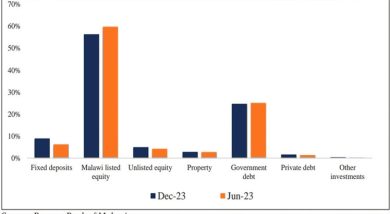UN speaks on impact of kwacha devaluation
The Food and Agriculture Organisation (FAO) of the United Nations says the recent 25 percent devaluation of the kwacha poses a detrimental impact on households’ economic access to food.
In its recent country brief, FAO said the lower value of the local unit is expected to intensify the spill-over effects of high international prices and cause further inflationary pressure this year.
Inflation rate is currently on the rise and was recorded at 23.5 percent as of June, according to the National Statistical Office.

Reads the FAO analysis in part: “In addition to the adverse impacts of the low cereal harvest in the South and high food prices across the country, a third factor that is foreseen to contribute to a worsening of food insecurity conditions is the forecasted slow economic growth in 2022, underpinned by the lingering effects of the Covid-19 pandemic and the country’s elevated debt levels.
“The sluggish economic growth is expected to limit a recovery in households’ incomes and further aggravate food access constraints.”
However, FAO said the devaluation of the currency effected on May 27 could increase the attractiveness of Malawian grains in neighbouring countries, supporting a potential increase in informal exports, particularly considering reduced outputs across most southern African countries.
Based on official production estimates, total cereal supplies in the 2022/23 marketing year (April/March) are estimated to exceed domestic demand for a second consecutive year.
Reserve Bank of Malawi (RBM) Governor Wilson Banda argued that it was necessary to devalue the local unit by 25 percent to align the foreign exchange supply to the macroeconomic fundamentals and ensure supply of foreign exchange in the formal market.
But Consumers Association of Malawi executive director John Kapito observed that Malawians cannot benefit from devaluation as the country is a net importer.
“Devaluing the kwacha would mean seeing an immediate jump in the cost of goods and services,” he said.





